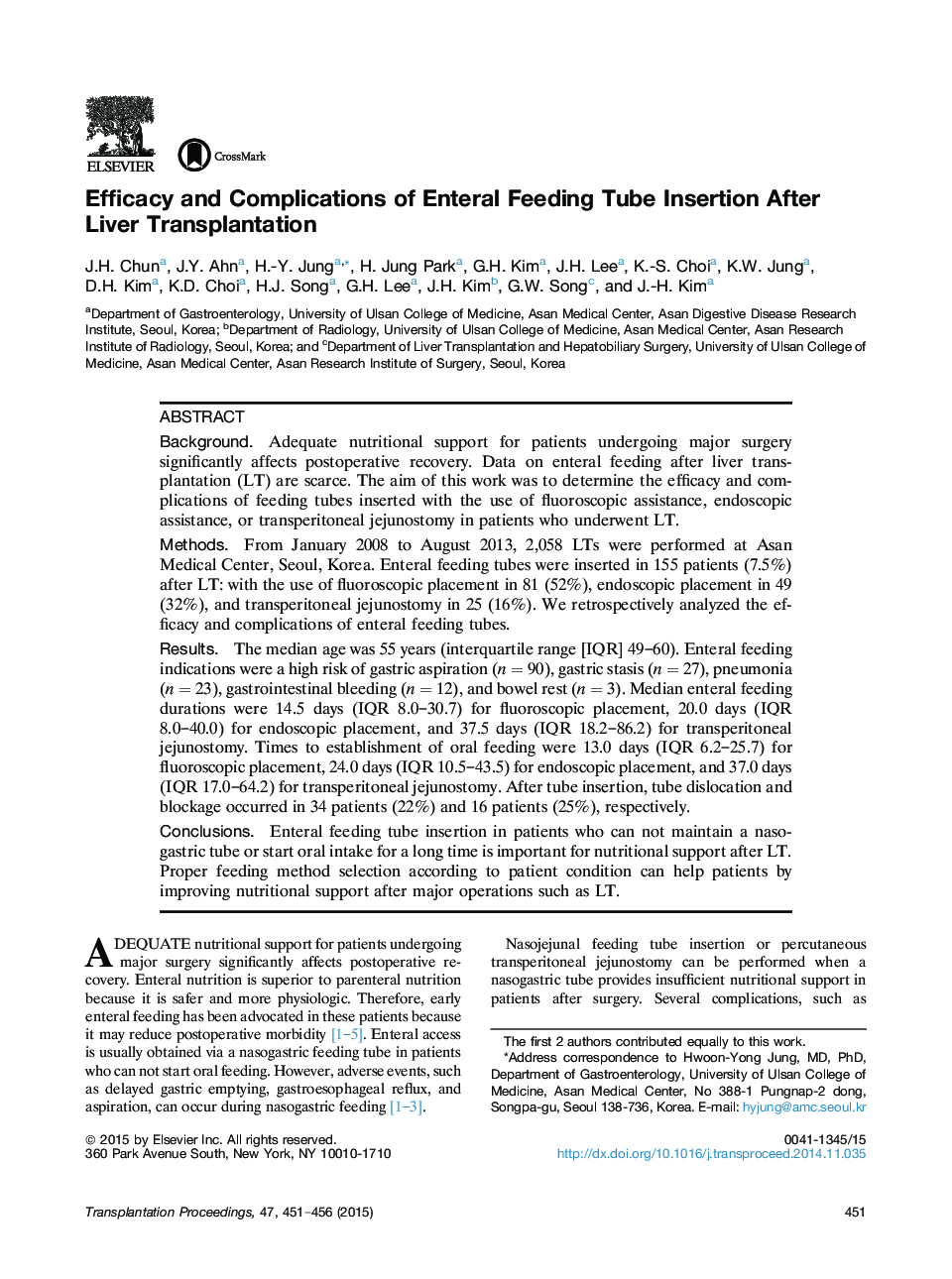| Article ID | Journal | Published Year | Pages | File Type |
|---|---|---|---|---|
| 4257625 | Transplantation Proceedings | 2015 | 6 Pages |
•We compared 3 feeding tube insertion methods in liver transplant patients.•We analyzed the efficacy and complications of the feeding tubes.•Selecting the method according to patient condition can improve nutritional support.
BackgroundAdequate nutritional support for patients undergoing major surgery significantly affects postoperative recovery. Data on enteral feeding after liver transplantation (LT) are scarce. The aim of this work was to determine the efficacy and complications of feeding tubes inserted with the use of fluoroscopic assistance, endoscopic assistance, or transperitoneal jejunostomy in patients who underwent LT.MethodsFrom January 2008 to August 2013, 2,058 LTs were performed at Asan Medical Center, Seoul, Korea. Enteral feeding tubes were inserted in 155 patients (7.5%) after LT: with the use of fluoroscopic placement in 81 (52%), endoscopic placement in 49 (32%), and transperitoneal jejunostomy in 25 (16%). We retrospectively analyzed the efficacy and complications of enteral feeding tubes.ResultsThe median age was 55 years (interquartile range [IQR] 49–60). Enteral feeding indications were a high risk of gastric aspiration (n = 90), gastric stasis (n = 27), pneumonia (n = 23), gastrointestinal bleeding (n = 12), and bowel rest (n = 3). Median enteral feeding durations were 14.5 days (IQR 8.0–30.7) for fluoroscopic placement, 20.0 days (IQR 8.0–40.0) for endoscopic placement, and 37.5 days (IQR 18.2–86.2) for transperitoneal jejunostomy. Times to establishment of oral feeding were 13.0 days (IQR 6.2–25.7) for fluoroscopic placement, 24.0 days (IQR 10.5–43.5) for endoscopic placement, and 37.0 days (IQR 17.0–64.2) for transperitoneal jejunostomy. After tube insertion, tube dislocation and blockage occurred in 34 patients (22%) and 16 patients (25%), respectively.ConclusionsEnteral feeding tube insertion in patients who can not maintain a nasogastric tube or start oral intake for a long time is important for nutritional support after LT. Proper feeding method selection according to patient condition can help patients by improving nutritional support after major operations such as LT.
